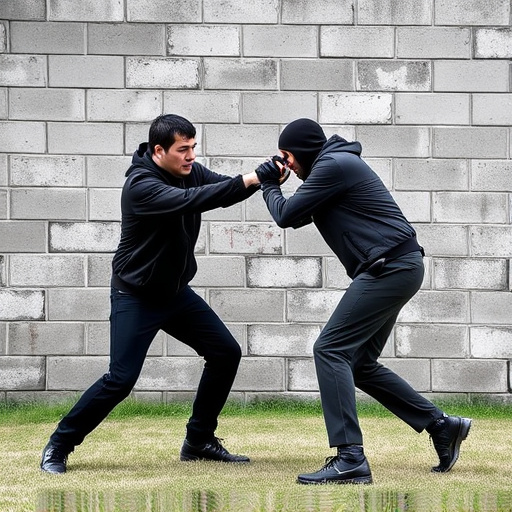Securing public spaces during demonstrations requires effective tools like riot control spray (pepper spray). The best pepper spray formulation for security includes 2% to 5% capsaicin, suitable solvents, and additives. Delivery systems ensure precise release. Choosing the right formulation, understanding components, and proper training are key for managing high-risk situations while prioritizing safety and minimizing harm, adhering to global legal standards.
“Discover the power of inflammatory riot control spray dispensers, a critical tool in modern security. This comprehensive guide explores the essential components of these devices, delving into the science behind the best pepper spray formulation for security. From understanding its key ingredients to examining global regulations and responsible usage techniques, this article equips readers with vital knowledge. Learn how effective pepper spray can deter riots while ensuring safety and legal compliance.”
- Understanding Riot Control Spray: Key Components
- Pepper Spray Strength: What Makes It Effective?
- Safety and Training: Responsible Usage Techniques
- Legal Considerations: Global Regulations and Compliance
Understanding Riot Control Spray: Key Components
Riot control spray, also known as pepper spray, is a crucial tool in securing public spaces and managing potential threats during demonstrations or civil unrest. When it comes to understanding riot control spray, knowing its key components is essential. The best pepper spray formulation for security purposes typically includes capsaicin, the active ingredient responsible for the burning sensation it causes. This compound is derived from chili peppers and is safe yet highly effective in incapacitating individuals temporarily.
In addition to capsaicin, other vital components include a suitable solvent to dissolve the active ingredient and ensure its stability, as well as additives that enhance the spray’s performance. The delivery system, often a canister or dispenser, plays a critical role in the spray’s effectiveness, ensuring a precise and controlled release of the agent. Choosing the right formulation and understanding these components are essential for security personnel to effectively manage high-risk situations while prioritizing safety.
Pepper Spray Strength: What Makes It Effective?
The effectiveness of a pepper spray dispenser largely hinges on its formulation, particularly the strength and concentration of capsaicin, the active ingredient responsible for the burning sensation it causes. The best pepper spray for security purposes should strike a balance between potency and user safety.
A high-quality pepper spray will typically have a capsaicin concentration ranging from 2% to 5%. This concentration is enough to temporarily disable or deter an aggressor without causing severe, long-lasting harm. The strength of the spray also determines its range and duration. A powerful formulation can reach up to 30 feet, providing users with a safe distance from potential threats. Moreover, understanding the best pepper spray formulation for security involves considering factors like weather conditions and target aggression level, ensuring that the chosen spray is suitable for real-world scenarios.
Safety and Training: Responsible Usage Techniques
The responsible usage of an inflammatory riot control spray dispenser, often containing best pepper spray formulation for security purposes, is paramount to ensure public safety and minimize damage. Proper training is essential for individuals entrusted with such devices. It involves understanding the spray’s effectiveness, range, and actuation mechanisms. Officers should be taught to assess threat levels, accurately judge distances, and deploy the spray responsibly, targeting assailants while minimizing impact on bystanders.
Regular drills and simulations are crucial to refining these techniques. This includes practicing proper grip, activation, and follow-up actions. By emphasizing safety and responsible use, security professionals can maximize the effectiveness of pepper spray while adhering to ethical standards and mitigating risks associated with its deployment.
Legal Considerations: Global Regulations and Compliance
The legal landscape surrounding riot control sprays, particularly those containing capsaicin or pepper spray, is complex and varies significantly across different countries and regions. In many jurisdictions, these agents are strictly regulated to ensure public safety and responsible use. The best pepper spray formulation for security must adhere to stringent guidelines set by governing bodies. For instance, the European Union has strict regulations on the composition and labeling of such products, aiming to balance public order maintenance with consumer protection.
International organizations like the United Nations also play a role in setting global standards. The OCSP (OECD Chemical Safety Program) provides guidelines for the safe use and handling of chemicals, including riot control agents. Compliance with these regulations is essential for manufacturers and distributors to ensure their products can be legally imported and used worldwide. This consideration is crucial when developing and deploying riot control sprays, as it dictates the formulations that are both effective and legal in diverse international settings.
The inflammatory riot control spray dispenser, or pepper spray, has established itself as a powerful tool in security applications worldwide. By understanding its key components, the science behind its effectiveness, and ensuring responsible usage through proper training and legal compliance, we can leverage the best pepper spray formulation for security purposes. Global regulations play a crucial role in dictating how these devices are used, highlighting the importance of staying informed to maintain public safety and security.
